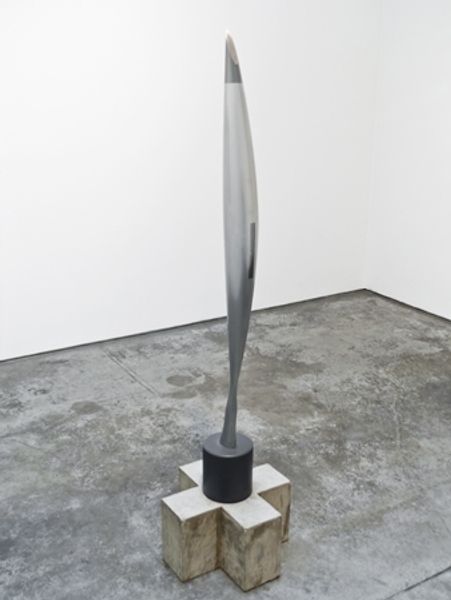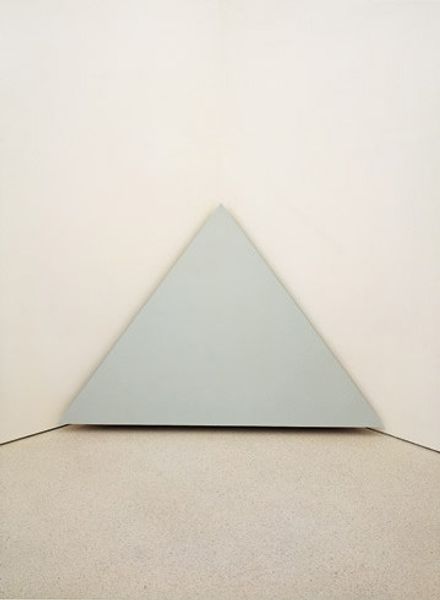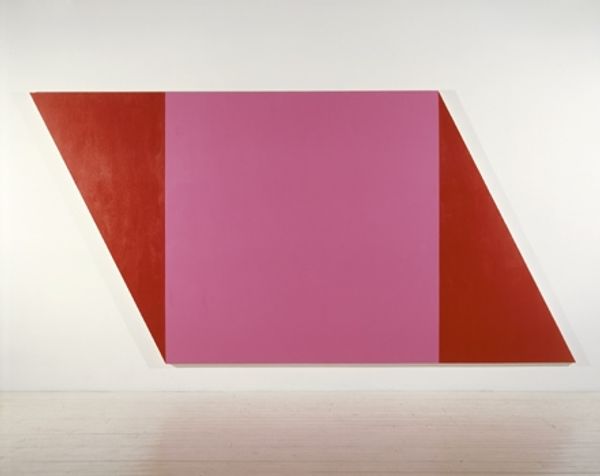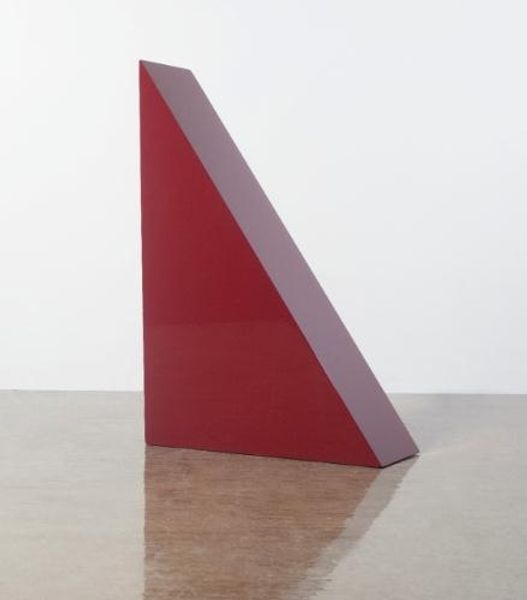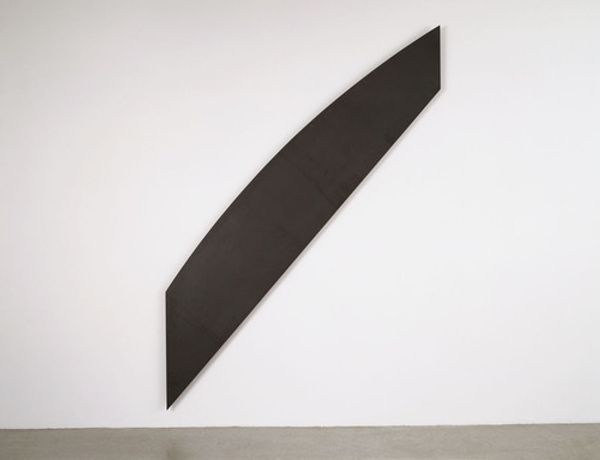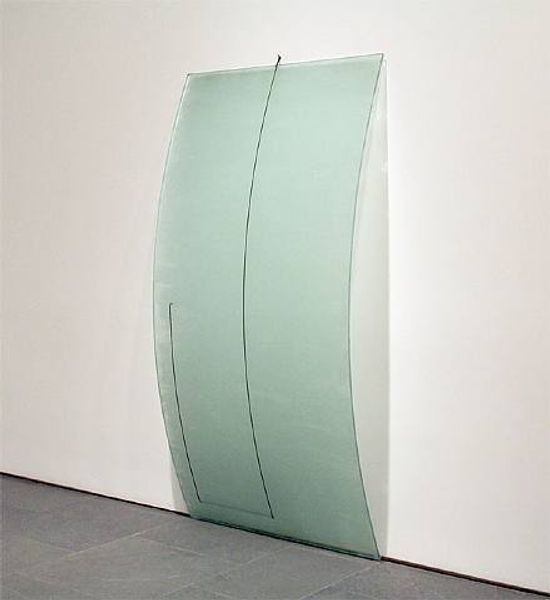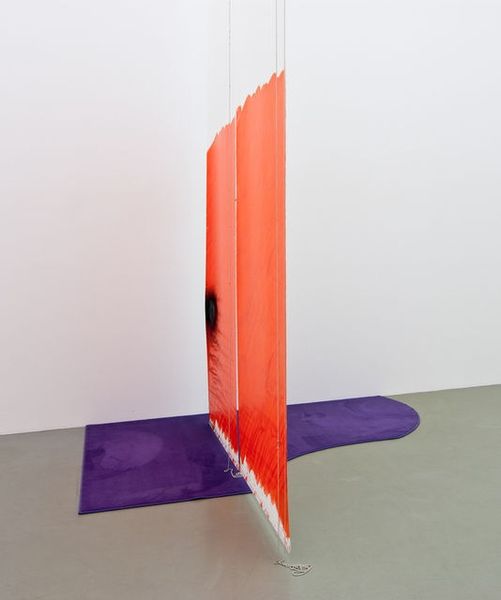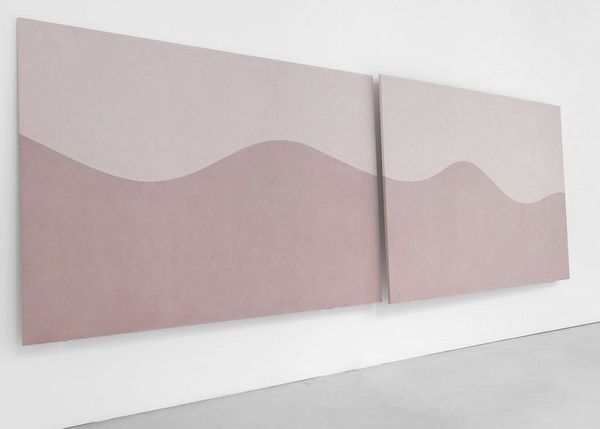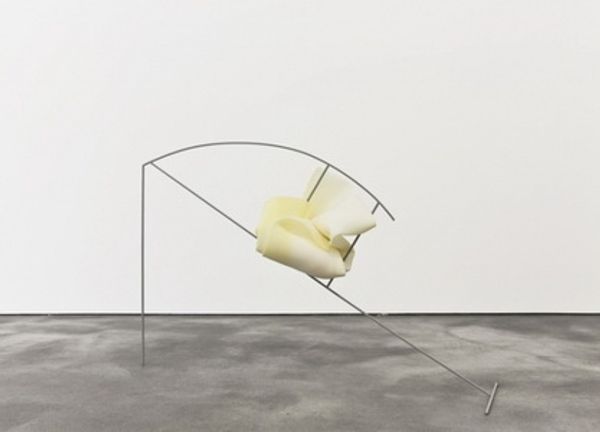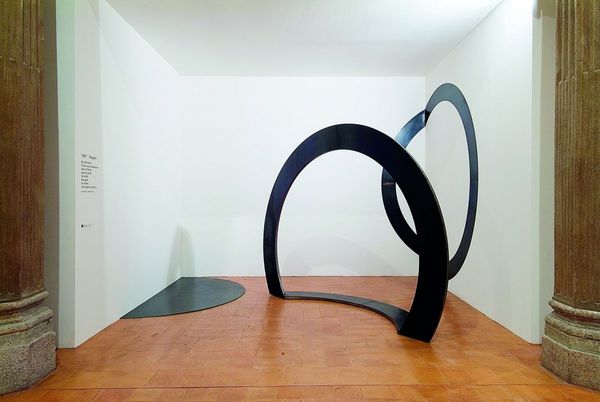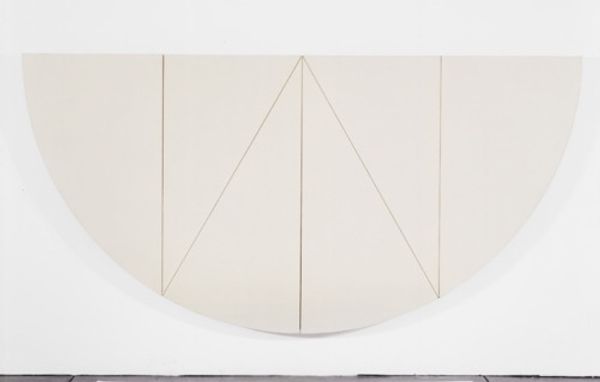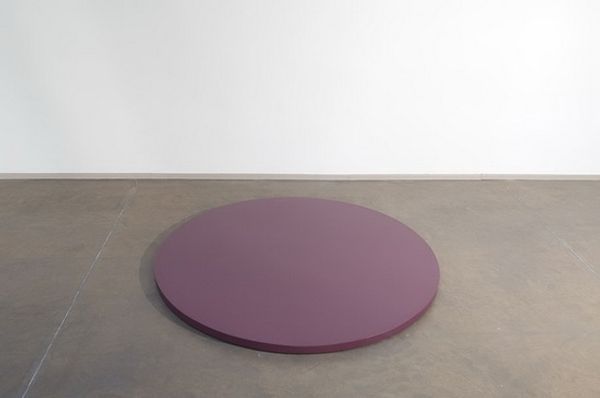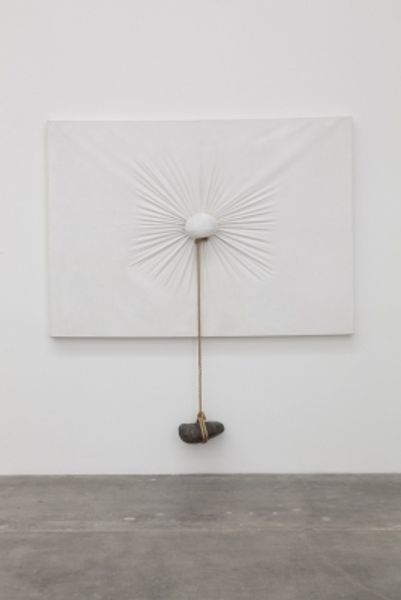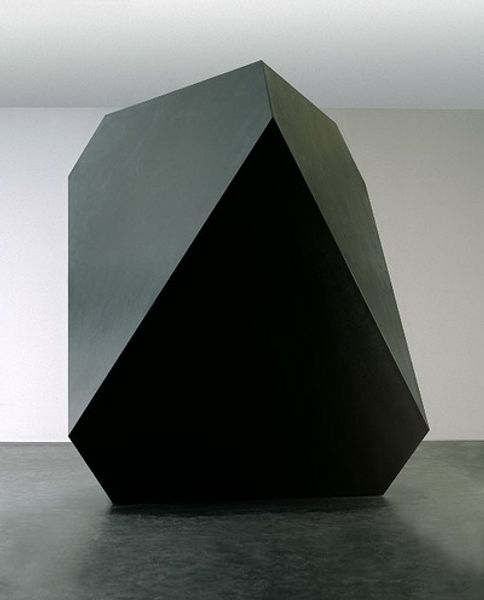
sculpture, resin
#
table
#
minimalism
#
geometric
#
sculpture
#
abstraction
#
pop-art
#
resin
Copyright: Phillip King,Fair Use
Curator: Looking at Phillip King’s 1962 sculpture, "Rosebud," one is immediately struck by its sheer, unapologetic geometry. Its cone-like form, constructed from resin and painted in that unmistakable bubblegum pink, firmly plants itself in the gallery space. Editor: My initial impression is the rather peculiar choice of colors, the interior being a contrasting, almost industrial teal. The overall feeling is somewhat unsettling, like a distorted memory of something saccharine and innocent. What do you make of the split in the cone? Curator: It disrupts the form. Rather than a flawless, idealized shape, it introduces tension. Consider the process involved. To achieve this subtle splaying and perfect edges, King manipulates industrial resin. His method bridges minimalist form with pop-art sensibility. He exploits the material for its properties of malleability but also plays against our expectation for art in such a hard, supposedly inflexible substance. Editor: Indeed. I am compelled to contemplate its Freudian echoes—that split is undeniably suggestive, almost aggressively so. I see a visual manifestation of suppressed desires, perhaps a critique of idealized feminine forms in the media. The use of pink is almost sarcastic in this context. Curator: Sarcasm, perhaps. I see the bright colour also as a material consideration. It highlights the sculptural form. And thinking of labour, let’s not overlook that colour applied, again meticulously, to the object. This pink also has an appeal for modern modes of consumption, appealing to our aesthetic desire for candy-like perfection, attainable perhaps in modernity. Editor: So the “rosebud” isn't just a visual metaphor for something hidden; it's a cultural symbol. It speaks to our longing for something, an origin lost to the passage of time and our desire to have it represented perfectly in modern form. Curator: Absolutely. Through manipulation of material and the disruption of expected form, King makes us question not just what we're looking at, but the labour and methods behind these industrial art objects, as well as our interaction and reception of them. Editor: Well, contemplating this sculpture certainly unearths some compelling and somewhat discomforting cultural artefacts! Curator: A thought provoking sculpture indeed. One that rewards close inspection and multiple interpretations.
Comments
No comments
Be the first to comment and join the conversation on the ultimate creative platform.
